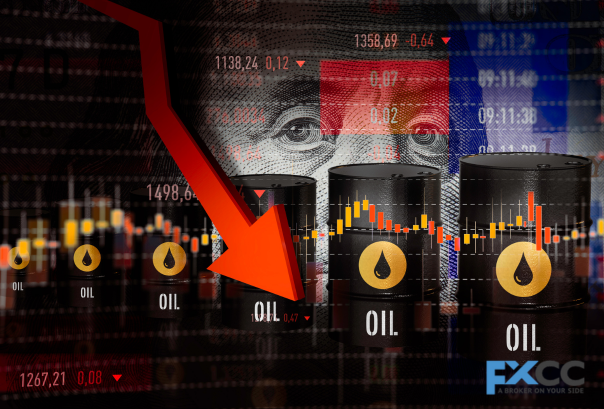Oil prices have been on a rollercoaster ride, soaring to record highs after the global energy crisis and then taking a recent dive. This sudden drop has many questions – is this a temporary pause or the start of a long-term decline? While a definitive answer remains elusive, let’s explore the factors influencing this price swing and what it might mean for the future of this critical commodity.

Fueling the Fire: The Factors Behind the Surge
Several factors propelled oil prices to unprecedented levels. The most significant was the ongoing war in Ukraine. Russia, a major oil producer, faced sanctions that disrupted global supply chains. This, coupled with a post-pandemic demand surge as economies reopened, created a classic scenario – high demand chasing limited supply. Additionally, the earlier focus on renewable energy led to a lag in new oil production investments, further tightening the supply squeeze.
Breaking the Momentum: Why Prices Might Be Dipping
However, the recent price drop suggests a potential shift in the market narrative. Here are some key reasons why the oil market might be entering a period of correction:
- Recessionary Jitters: Rising interest rates and inflation concerns have sparked fears of a global recession. A slowdown in economic activity would result in decreased demand for oil, putting downward pressure on prices.
- The Strategic Petroleum Reserve (SPR) Steps Up: To combat high gas prices, the U.S. government announced the release of a record amount of oil from its emergency reserves. This influx of oil into the market helped to cool prices in the short term.
- Shale Boom 2.0? Enticed by high prices, U.S. shale producers are ramping up production. This increased supply could meet demand and stabilize prices, or even push them down if production outpaces consumption.
- The Green Giant Awakens: The global push for renewable energy sources is gaining momentum. As countries invest in solar, wind, and other alternatives, oil dependence might gradually decrease, impacting long-term demand.

Temporary Blip or Lasting Trend? Navigating the Uncertainty
Predicting the future of the oil market is a complex endeavor; it’s influenced by a multitude of interconnected factors. However, some key considerations can help us navigate the uncertainty.
- War in Ukraine: A Major Wildcard: The war’s trajectory remains a major question mark. Escalation or a prolonged conflict could further disrupt supply and drive prices up. Conversely, a resolution could lead to a significant supply increase and price softening.
- The Global Economic Outlook: If recession fears materialize and economic activity slows, oil demand will likely take a hit, pushing prices down. However, a healthy economic recovery could reignite demand and fuel a price rebound.
- The Rise of Renewables: The long-term outlook for oil hinges on the pace of renewable energy adoption. If renewables continue to gain ground, oil demand will face a structural decline, leading to a potential long-term price decrease.
Beyond Boom and Bust: A More Sustainable Future
The current oil price volatility underscores the need for a more diversified and sustainable energy future. While oil will likely remain a key player for years to come, its dominance is gradually waning. Increased investment in renewable energy sources can offer greater price stability and environmental benefits in the long run.
The Bottom Line: A Bumpy Road Ahead
The recent drop in oil prices might be a temporary pause or the start of a longer-term trend. The answer lies in the complex interplay of geopolitical events, economic conditions, and the pace of the green energy transition. Consumers and businesses alike should brace for a period of price volatility in the near future. Staying informed about evolving market dynamics will be crucial for navigating this uncertain terrain.


